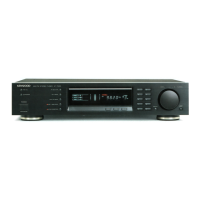
 Loading...
Loading...
Do you have a question about the Kenwood KT-7020 and is the answer not in the manual?
| tuning frequency range | 87.5 MHz - 108 MHz |
|---|---|
| usable sensitivity (MONO) | 0.95 µV/10.8 dB |
| total harmonic distortion (MONO) | 0.007% |
| signal to noise ratio (MONO) | 92 dB |
| stereo separation (1 kHz) | 65 dB |
| capture ratio | 1.0 dB (WIDE) |
| alternate channel selectivity (+400 kHz) | 60 dB (WIDE) |
| image rejection ratio (at 98 MHz) | 82 dB |
| IF rejection ratio (at 98 MHz) | 110 dB |
| spurious rejection ratio (at 98 MHz) | 105 dB |
| AM suppression ratio | 76 dB |
| frequency response | 20 Hz - 15 kHz, +0.5 dB, -0.5 dB |
| output level/impedance | 0.6 V/3.3 kΩ |
| tuning frequency range | 531 kHz - 1, 602 kHz |
|---|---|
| usable sensitivity | 10 µV (350 µV/m) |
| signal to noise ratio | 55 dB |
| total harmonic distortion | 0.25% |
| image rejection ratio (Loop) | 40 dB |
| selectivity | 30 dB |
| output level/impedance | 0.18 V/3.3 kΩ |
| power consumption | 20 W |
|---|---|
| dimensions (W x H x D) | 440 mm x 98 mm x 318 mm |
| weight | 4.3 kg |